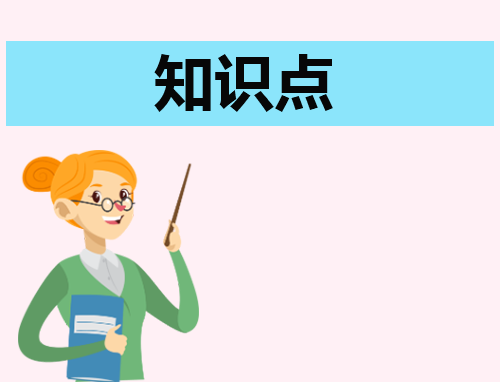六年级学生必背英语知识点模板
六年级学生必背英语知识点模板(8篇)
对于英语这一门学科,平时要做好重点知识点归纳。知识点也可以理解为考试时会涉及到的知识,也就是大纲的分支。下面是小编给大家整理的六年级学生必背英语知识点模板,仅供参考希望能帮助到大家。

六年级学生必背英语知识点模板篇1
助动词 do 在祈使句中的强调
1. 表示强调的请求。如:
Do come with us. 请一定要和我们一起去。
Please! Do be quiet a moment! 求求你们! 安静一会儿!
2. 表示委婉或客气。如:
Do try this fish. 请尝尝这鱼。
Do have another cup of coffee. 请再喝杯咖啡吧。
3. 表示不耐烦。如:
Do stop talking! 别说啦!
4. 希望说服对方。如:
Do help me with this maths problem. 务请帮我解答这道数学题。
六年级学生必背英语知识点模板篇2
形容词的定义及用法
1. 形容词定义
形容词修饰名词,说明事物或人的性质或特征,在句中可作定语、表语、状语等成分。
如:This is a difficult problem to solve.(作定语)
The weather here is very pleasant.(作表语)
Maggie is very polite.(作表语)
2. 形容词的`位置
形容词在句中的位置主要指作定语时与名词的排列位置。
1)作定语一般位于名词前。
如:I often have a joyful hear. 我通常都是心情愉快。
China has a peaceful environment.
2)形容词在修饰someone, somebody, something, anyone, anybody, anything, nobody, nothing等不定代词时,需要置于其后。
如:I have something important to tell you all.
3)多个形容词修饰名词时的`排列顺序(本部分只出现在教师版中)
多个形容词同时修饰一个名词时,其排列顺序通常如下:
限定词(包括冠词、人称代词、指示代词等)+大小+形状+性质或状态+颜色+年龄或新旧+材料或种类+来源+名词
如:There are a few big round black new wooden French tables in the room.
六年级学生必背英语知识点模板篇3
祈使句
肯定祈使句以动词原形开头;否定祈使句以don’t加动词原形开头。
如:Open the box for me ,please.
请为我打开盒子。
Liu Tao! Please get up earlier tomorrow.
刘涛,明天请早点起床!
Don’t walk on the grass!
不要在草地上走!
Helen! Don’t climb the tree,please.
海伦!不要爬树。
go的用法
去干嘛用go +动词ing
如: go swimming; go fishing;
go skating;
go camping;
go running;
go skiing;
go rowing…
六年级学生必背英语知识点模板篇4
名词复数规则
1.一般情况下,直接加-s,如:book-books, bag-bags, cat-cats, bed-beds
2.以s. x. sh. ch结尾,加-es,如:bus-buses, box-boxes, brush-brushes, watch-watches
3.以"辅音字母+y"结尾,变y为i, 再加-es,如:family-families, strawberry-strawberries
4.以"f或fe"结尾,变f或fe为v, 再加-es,如:knife-knives
5.不规则名词复数:
man-men, woman-women, policeman-policemen, policewoman-policewomen, mouse-mice
child-children
foot-feet,.tooth-teeth
fish-fish, people-people, Chinese-Chinese, Japanese-Japanese
六年级学生必背英语知识点模板篇5
1. be located (in/on/at) 位于
2. be made of 由……制成
3. be made up of 由……组成
4. be on "上演, 上映"
5. be pleased with 对……满意
6. be proud of 为……而感到自豪
7. be/get ready for 为……作准备
8. be surprised at 对…...感到惊奇
9. be thankful to sb. 对某人很感激
10. be/get used to+v-ing 习惯于
11. be worried/serious about 为……而担心
12. because of=thanks to 由于
13. belong to 属于
14. break out 爆发
15. break into "闯入, 破门而入"
16. by air mail 寄航空邮件
17. by bus 乘公共汽车
18. by oneself 亲自
19. by phone 打电话
20. by the way 顺便说;顺便问一下
21. call on 拜访
22. care for 照顾; 喜欢
23. carry out 执行
24. catch (a) cold 着凉;伤风
25. catch up with 赶上(或超过)
26. change ones mind 改变主意
27. check in 办理登机
28. come across 被理解; 遇见
29. come back 回来;想起来
30. come from 出生于;来自
六年级学生必背英语知识点模板篇6
一般过去时
1.一般过去时表示过去某个时间发生的动作或存在的状态,常和表示过去的时间状语连用。一般过去时也表示过去经常或反复发生的动作感谢。
2.Be动词在一般过去时中的变化:
⑴am 和is在一般过去时中变为was。(was not=wasn’t)
⑵are在一般过去时中变为were。(were not=weren’t)
⑶带有was或were的句子,其否定、疑问的变化和is, am, are一样,即否定句在was或were后加not,一般疑问句把was或were调到句首。
3.句中没有be动词的一般过去时的句子
否定句:didn’t +动词原形,如:Jim didn’t go home yesterday. 一般疑问句:在句首加did,句子中的`动词过去式变回原形。如:Did Jim go home yesterday? 特殊疑问句:
⑴疑问词+did+主语+动词原形?如: What did Jim do yesterday? ⑵疑问词当主语时:疑问词+动词过去式?如:Who went to home yesterday?
动词过去式变化规则
1.一般在动词末尾加-ed,如:pull-pulled, cook-cooked
2.结尾是e加d,如:taste-tasted
3.末尾只有一个元音字母和一个辅音字母的重读闭音节,应双写末尾的辅音字母,再加-ed,如:stop-stopped
4.以“辅音字母+y”结尾的,变y为i,再加-ed,如:study-studied
5.不规则动词过去式: am,is-was, are-were, do-did, see-saw, say-said, give-gave, get-got, go-went, come-came, have-had, eat-ate, take-took, run-ran, sing-sang, put-put, make-made, read-read, write-wrote, draw-drew, drink-drank, fly-flew, ride-rode, speak-spoke, sweep-swept, swim-swam, sit-sat
be going to
1.be going to 表示将要发生的事或打算、计划、决定要做的事情。
2.肯定句:be going to +动词原形,如:Jim is going to play football. 否定句:be not going to +动词原形,如:Jim is not going to play football. 一般疑问句:把be动词调到句首,如:Is Jim going to play football? 特殊疑问句:疑问词+be+主语+going to+动词原形?如:What is Jim going to do? 疑问词当主语时:疑问词+be+going to+动词原形?如:Who is going to play football?
六年级学生必背英语知识点模板篇7
一般现在时
1.一般现在时表示经常或习惯性的动作,也可表示现在的状态或主语具备的性格和能力。
2.一般现在时中,没有be动词和情态动词,主语为第三人称单数的肯定句,动词要按规则加上s,主语是非第三人称单数的肯定句,动词用原形。
3.在一般现在时中,句中有be动词或情态动词时,否定句在be动词和情态动词后加not,一般疑问句将be动词或情态动词放在句首。 4.在一般现在时中,句中没有be动词或情态动词时,主语为第三人称单数的否定句在动词前加does+not (doesn’t),一般疑问句在句首加does,句子中原有动词用原形;主语为非第三人称单数,否定句用do+not (don’t),一般疑问句在句首加do,句子中动词用原形。
动词+s的`变化规则
1.一般情况下,直接加-s,如:cook-cooks, milk-milks
2 .以s. x. sh. ch. o结尾,加-es,如:guess-guesses, wash-washes, watch-watches, go-goes
3.以“辅音字母+y”结尾,变y为i, 再加-es,如:study-studies
现在进行时
1.现在进行时表示现在正在进行或发生的动作,也可表示当前一段时间内的活动或现阶段正在进行的动作。
2.现在进行时的肯定句基本结构为be+动词ing.
3.现在进行时的否定句在be后加not。
4.现在进行时的一般疑问句把be动词调到句首。
动词加ing的变化规则
1.一般情况下,直接加ing,如:cook-cooking
2.以不发音的e结尾,去e加ing,如:make-making, taste-tasting
3.如果末尾是一个元音字母和一个辅音字母,双写末尾的辅音字母,再加ing,如:run-running, stop-stopping
4. 以ie结尾的动词, 需要把ie变为y加ing,如:die-dying
六年级学生必背英语知识点模板篇8
(1) 字母:
(大小)辨认、书写顺序 : Aa Bb Cc Dd Ee Ff Gg Hh Ii Jj Kk Ll Mm Nn Oo Pp Qq Rr Ss Tt Uu Vv Ww __ Yy Zz.
元音字母:A a , Ee, Ii, Oo, Uu
半元音字母: Yy
书写容易错误的字母:E , F , G, M, N, d, i, p, q, x, y.
(2) 数字:基数词和序数词的运用,如计算、购物等.
基数词: One, two, three, five, six, seven, eight, nine, ten , eleven, twelve, thirteen, fourteen, fifteen„ twenty, twenty-one„ thirty, forty, fifty„ eighty, ninety, one/a hundred , one/a hundred and one„ two hundred.
序数词: first , second , third , fourth , fifth, sixth, seventh, eighth, ninth, tenth, eleventh, twelfth„ twentieth, twenty-first, twenty-second, twenty-third, twenty-four„thirtieth, fortieth, fiftieth„ eightieth, ninetieth„
相关句型:
1) What’s thirty and forty? That comes to seventy.
2) What’s your telephone number? My telephone number is 83555723. 3) What time is it ? It’s half past ten.
4) When do you usually get up ? At six thirty-five.
5) Where do you live? I live at No.48 Renmin Road.
6) How old are you? I’m twelve.
7) How much does it cost? It costs 50 yuan.
8) How many cars have you got? I have got 6 cars.
9) How many birds can you see in the tree? I can see 3.
10) How many dolls are there on the bed? There is one/a doll.
11) How many dolls are there on the bed? There are four dolls.
12) Which floor do you live on? I live on the fifth floor.
13) Excuse me, can you tell me the way to Baiyun hotel?
Yes, go down this street, then turn left at the third crossing„.
14) Who’s the fifth girl from the right? She’s my cousin.
注意: 数词的.应用; 不可数名词及它的量的表示方法;many与much在用法上的区别;there is/are与have/has在用法上的区别.
(3)颜色:实物的颜色
colours: red, pink, yellow, brown, blue, purple, orange, black, white, grey, dark blue, light blue.
相关句型:
1) What colour is your coat? It’s ...
2) What’s your favourite colour? My favourite colour is „
(4)时间:年、季节、月、星期、日、时刻
year, season( spring, summer, autumn, winter) ,
month: January, February, March, April, May, June, July, August, September, October, November, December.
Week: Sunday, Monday, Tuesday, Wednesday, Thursday, Friday, Saturday.
Day: 1st May (the first of May), May 2nd ( May the second)
Time: (an) hour, minute, second
10:05 (five minutes past ten, ten o five)
10:10 (ten minutes past ten, ten ten)
10:15 (quarter past ten, ten fifteen)
10:30 (half past ten, ten thirty)
11:00 (eleven o’clock)
